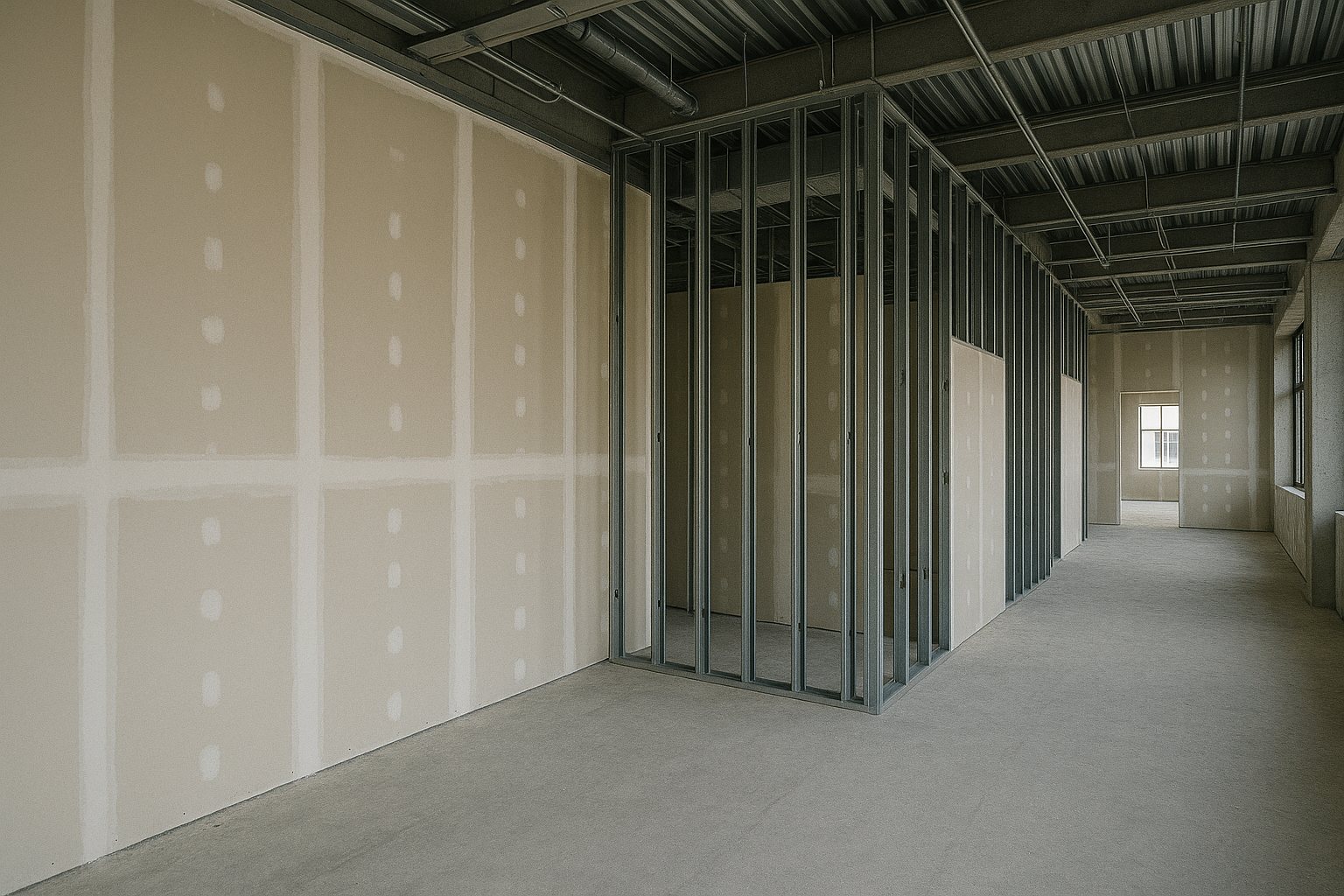
Multi-trade coordination zones are some of the most complicated—and expensive—areas to estimate accurately in drywall scope. These zones, typically found in corridors, mechanical rooms, shafts, and ceiling plenums, are where drywall, MEP, fire protection, and structural systems converge. For Architects, Engineers, and General Contractors, failing to price these areas correctly can lead to chronic rework, change orders, and strained subcontractor relationships. Addressing these zones in your estimates with precision is not just about quantity—it’s about strategy, staging, and risk.
These zones are areas within a construction project where several trades must perform overlapping work within tight spatial constraints. They commonly include:
In these spaces, trades must coordinate installation sequences, clearances, and access—often with limited documentation early in the design phase.
Drywall pricing in coordination zones requires far more than square footage measurements. Considerations include:
These variables make baseline unit rates insufficient. Instead, estimators need to apply condition-based cost modeling tied to trade density and access constraints.
Incorporating historical productivity data from similar zones is one of the most accurate ways to account for coordination impacts. A tool like Active Estimating can help teams retrieve relevant metrics based on scope tags, room type, and trade interactions. For instance, projects may show a 25–40% labor slow-down in corridor ceiling framing where ductwork exceeds 60% of available plenum space.
Standard estimating software often lacks the nuance to treat coordination zones with the specificity they require. A dedicated system built for drywall estimating makes it easier to build conditional pricing structures. These platforms allow users to connect productivity benchmarks with spatial constraints and include both objective and subjective cost factors.
Multi-trade coordination zones represent high-risk, high-complexity areas in drywall estimating. By leveraging historical data, field feedback, and risk-adjusted pricing models, contractors can improve the accuracy of their estimates and protect their margins. Estimating platforms like Active Estimating bring visibility, speed, and repeatability to these difficult areas—making them more predictable and less costly.
Contact Information:
Active Estimating
508 2nd Street, Suite 208
Davis
California
95616
Rich Schoener
richard@activeestimating.com
(877)
Schedule a personalized demo to see how Active Estimating can work for your specific needs.
